The Brain’s Blueprint for Grit: The Neuroscience of Mental Toughness
The neuroscience of mental toughness reveals that grit is not just a personality trait—it is a dynamic, biological process sculpted by the brain’s architecture and chemistry. At the core of the neuroscience of mental toughness are intricate neural networks, neurotransmitter systems, and evolutionary adaptations that empower us to persevere, adapt, and excel under pressure. Advanced brain imaging has revealed that the prefrontal cortex, often referred to as the brain’s “CEO,” is responsible for executive functions such as planning, impulse control, and self-regulation—skills that underpin mental toughness. When faced with adversity, this region works in concert with the anterior cingulate cortex, which detects errors and signals the need for adjustment, and the limbic system, which processes emotion and motivation.
The neuroscience of mental toughness also highlights how our brains are evolutionarily wired to overcome obstacles. Early humans who could withstand hardship, recover from setbacks, and keep pursuing critical goals were more likely to survive and thrive. This evolutionary advantage remains evident today: the brain’s stress response system, when properly harnessed, sharpens focus and mobilizes energy, enabling us to rise to the occasion. Yet, the neuroscience of mental toughness makes it clear that these abilities are not fixed; they are, in fact, trainable. By understanding the brain’s blueprint for grit, you can intentionally strengthen the neural circuits responsible for resilience, determination, and adaptive problem-solving.
Neuroplasticity: How the Brain Builds Toughness
One of the most empowering discoveries in the neuroscience of mental toughness is the concept of neuroplasticity—the brain’s remarkable and lifelong ability to reorganize itself by forming new neural connections. This means that mental toughness is not an innate, unchangeable trait, but a set of neural pathways that can be cultivated and reinforced through deliberate practice and experience. Neuroplasticity lies at the heart of the neuroscience of mental toughness, enabling the brain to adapt to new challenges, recover from setbacks, and learn from adversity.
When you repeatedly confront challenges, reflect on failures, and persist despite discomfort, you are actively engaging the neuroscience of mental toughness by strengthening the synaptic connections between neurons involved in resilience and grit. Over time, these neural pathways become more efficient, allowing you to recover more quickly from setbacks and maintain focus under pressure. Research shows that neuroplasticity also supports emotional regulation, allowing you to respond to stress with greater intention rather than impulsivity. This adaptive flexibility is the foundation of mental toughness, enabling you to break free from negative patterns, reshape your responses, and continually evolve in the face of life’s demands.
The neuroscience of mental toughness demonstrates that every thought, action, and experience has the potential to rewire your brain. By embracing a growth mindset, practicing positive self-talk, and engaging in activities that challenge your limits, you can harness neuroplasticity to build a more resilient, adaptable, and mentally tough brain—one that is prepared not only to survive adversity but also to transform it into fuel for personal and professional growth.

The Four Pillars: Commitment, Challenge, Control, and Confidence
Modern neuroscience and psychology converge on four core components of mental toughness:
- Commitment: The capacity to stay focused and see tasks through, even when motivation wanes.
- Challenge: The tendency to view obstacles as opportunities for growth rather than threats.
- Control: The belief in one’s ability to influence outcomes and regulate emotions under stress.
- Confidence: A deep-seated self-belief that persists even in the face of failure or criticism.
The neuroscience of mental toughness reveals that these pillars are supported by specific brain networks, particularly the prefrontal cortex (for planning and self-regulation), the anterior cingulate cortex (for error detection and adaptation), and the limbic system (for emotional processing and regulation).
The Stress Paradox: Harnessing Pressure for Growth
The neuroscience of mental toughness reveals that stress, when managed well, is not the enemy—it’s an essential ingredient for growth. Acute stress activates the hypothalamic-pituitary-adrenal (HPA) axis, releasing cortisol and adrenaline to sharpen focus and energy. Chronic, unmanaged stress, however, can erode resilience and impair cognitive function. The key is learning to ride the wave of stress, using it as fuel for adaptation rather than allowing it to overwhelm your system.
The Role of Dopamine: Motivation, Reward, and Persistence
Dopamine, the brain’s “motivation molecule,” plays a central role in the neuroscience of mental toughness. When you pursue meaningful goals and overcome obstacles, your brain releases dopamine, reinforcing the behaviors that led to success. This reward system is why mentally tough individuals can persist through setbacks—they are neurologically primed to seek out challenge and find satisfaction in progress, not just outcomes.
Emotional Regulation: Mastering the Inner Storm
Mental toughness is as much about managing emotions as it is about enduring hardship. The prefrontal cortex acts as the brain’s executive center, helping you regulate fear, frustration, and self-doubt. Through practices such as mindfulness, reflection, and reframing, you can strengthen the neural circuits that enable you to stay calm and focused under pressure, a hallmark of the neuroscience of mental toughness.
Self-Belief and Positive Self-Concept: The Brain’s Confidence Circuit
Research indicates that individuals with a mentally tough mindset have a more positive self-concept and higher self-belief, even when facing adversity. This is not blind optimism, but a realistic assessment of one’s strengths and the ability to learn from past failures. The neuroscience of mental toughness highlights the role of the default mode network and prefrontal cortex in constructing and maintaining this positive self-image. By consciously reflecting on your achievements, strengths, and growth, you reinforce the neural pathways that support confidence and resilience.
The Social Brain: Connection, Support, and Accountability
Humans are social creatures, and the neuroscience of mental toughness underscores the importance of social support. Oxytocin and other “bonding” chemicals enhance trust, motivation, and the ability to recover from setbacks. Mentally tough individuals seek out mentors, peers, and coaches who challenge them, provide honest feedback, and celebrate their progress. This social reinforcement accelerates brain-based change and sustains motivation during difficult times.
The Power of Purpose: Meaning as a Neurobiological Driver
Purpose is a powerful driver of mental toughness. When your goals are aligned with your values and sense of meaning, the brain’s reward circuits are more active, and setbacks are less likely to derail you. The neuroscience of mental toughness shows that individuals with a strong sense of purpose have greater activation in brain regions associated with motivation, emotional regulation, and resilience. Clarifying your “why” is not just motivational—it’s neurobiological.

Real-World Application: A Client’s Journey to Mental Toughness
One of my clients, whom I’ll call Maya, came to me overwhelmed by professional setbacks and self-doubt. Despite her talent, every failure felt personal, and she struggled to recover from criticism. Through our coaching, we focused on the neuroscience of mental toughness, helping her understand how her brain responds to stress, how to reframe setbacks, and how to build self-belief through incremental wins. Over time, Maya learned to see challenges as opportunities, regulate her emotions more effectively, and draw strength from her values and support network. Today, she approaches her goals with resilience and confidence, embodying the very principles we explored together.
Evolutionary Insights: Why We Seek Challenge
From an evolutionary perspective, the drive to overcome obstacles is deeply ingrained in the human brain. Early humans who persisted through hardship were more likely to survive and pass on their genes. The neuroscience of mental toughness reveals that this drive is not just about survival, but about thriving—using adversity as a catalyst for growth, creativity, and innovation.
The Myth of Effortless Success: Embracing Discomfort
Mentally tough individuals understand that growth lies outside the comfort zone. The neuroscience of mental toughness shows that the brain’s “central governor” (a concept proposed by Tim Noakes) monitors both physical and psychological stress, often signaling us to stop long before we reach our proper limits. By learning to tolerate discomfort and push through perceived barriers, you unlock reserves of strength and creativity you never knew you had.
Building Mental Toughness: Practical Strategies from Brain Science
- Set Stretch Goals: The brain thrives on challenge. Set goals that push your limits, then break them down into manageable steps to build confidence and momentum.
- Reflect on Setbacks: Use failure as feedback. After a setback, ask yourself: What did I learn from this experience? How can I adapt? This reflection strengthens neural circuits for resilience.
- Practice Emotional Regulation: When stress rises, pause and take a deep breath. Engage your prefrontal cortex by naming your emotions and choosing your response, rather than reacting impulsively.
- Cultivate Self-Belief: Regularly review your achievements and strengths. Visualize success and remind yourself of past victories to reinforce the brain’s confidence circuits.
- Seek Support and Accountability: Share your goals with trusted peers or mentors to gain support and hold yourself accountable. Social reinforcement activates the brain’s motivation pathways and helps sustain effort.
- Embrace Discomfort: Deliberately put yourself in situations that stretch your abilities. The more you practice tolerating discomfort, the more resilient your brain becomes.

The Distinction Between Mental Toughness, Resilience, and Hardiness
Although mental toughness, resilience, and hardiness are often used interchangeably in everyday language, the neuroscience of mental toughness reveals essential differences in how these attributes function in the brain and life. Resilience is best understood as the brain’s capacity to recover from adversity—bouncing back after setbacks, trauma, or stress. Neuroscientifically, resilience involves flexible neural pathways that allow for emotional regulation, adaptive thinking, and the ability to regain equilibrium after disruption.
Hardiness, on the other hand, is considered a personality trait rooted in both biology and experience. Individuals high in hardiness demonstrate a natural resistance to stress, viewing challenges as opportunities for growth rather than threats. The neuroscience of mental toughness reveals that hardiness is linked to a robust stress response system and a tendency to view adversity through a positive, proactive lens.
The neuroscience of mental toughness, however, encompasses both resilience and hardiness, but adds another dimension: the proactive drive to seek out challenge, maintain confidence in uncertainty, and persist in the face of ongoing obstacles. While resilience is about recovery and hardiness is about resistance, mental toughness is about forward movement—actively engaging with difficulty, learning from it, and emerging stronger. Understanding these distinctions allows you to target specific areas for growth and leverage the neuroscience of mental toughness to optimize both personal and professional outcomes.
The Downside of Over-Toughness: When Grit Becomes Rigidity
While the neuroscience of mental toughness celebrates perseverance and grit, it also cautions against the dangers of overexerting these qualities. Over-identifying with toughness can lead to rigidity—a state where the brain’s adaptive circuits become inflexible, making it difficult to adjust to changing circumstances or recognize when it’s time to pause. When grit morphs into stubbornness or the denial of vulnerability, it can result in chronic stress, emotional numbness, and even burnout.
The neuroscience of mental toughness emphasizes that actual toughness is not about relentless endurance at all costs. Instead, it’s about knowing when to persist and when to pivot, when to push forward and when to seek support. The most mentally tough individuals are those who can flexibly adapt their strategies, embrace vulnerability as a source of strength, and recognize that asking for help or taking a break is not a sign of weakness, but a sign of wisdom. By understanding the limits of grit, you can avoid the pitfalls of over-toughness and harness the full power of the neuroscience of mental toughness for sustainable growth.

The Science of Recovery: Rest as a Tool for Toughness
In the neuroscience of mental toughness, rest is not an afterthought—it is a critical tool for building and sustaining high performance. The brain requires regular periods of rest and recovery to consolidate learning, restore neurotransmitter balance, and repair neural circuits taxed by stress and effort. Sleep, in particular, plays a vital role in memory formation, emotional regulation, and the removal of metabolic waste from the brain.
Downtime and relaxation are equally important. Engaging in restorative activities—such as mindful breathing, spending time in nature, or engaging in creative pursuits—activates the parasympathetic nervous system, which calms the stress response and supports neuroplasticity. The neuroscience of mental toughness demonstrates that strategic rest enhances your ability to handle future challenges, improves decision-making, and prevents the depletion of mental and emotional resources. By making recovery a deliberate part of your routine, you leverage the full benefits of the neuroscience of mental toughness and position yourself for long-term success.
The Future of Mental Toughness: Neurotechnology and Beyond
The future of the neuroscience of mental toughness is being shaped by rapid advances in neurotechnology and brain science. Tools such as neurofeedback, brain endurance training, and wearable devices now enable individuals to monitor and enhance their mental states with unprecedented precision. Neurofeedback, for example, uses real-time brainwave data to help users train their focus, emotional regulation, and stress resilience, directly engaging the neural circuits involved in mental toughness.
Brain-endurance training, initially developed for elite athletes, is now being adapted for business leaders, creatives, and anyone seeking to push their cognitive limits. These technologies, combined with deeper insights into genetics, brain chemistry, and environmental influences, are opening new possibilities for cultivating the neuroscience of mental toughness. As these innovations become more accessible, individuals will have greater agency in shaping their resilience, performance, and overall well-being.

The Journey Forward: Mastering the Neuroscience of Mental Toughness
Mastering the neuroscience of mental toughness is an ongoing journey, not a one-time achievement. It requires a commitment to self-awareness, continuous learning, and the willingness to embrace both challenge and recovery. By understanding how your brain responds to adversity, stress, and uncertainty, you gain the tools to train your mind for greater perseverance, adaptability, and growth.
Whether you are striving for excellence in your career, navigating personal challenges, or seeking to unlock your highest potential, the neuroscience of mental toughness provides a robust roadmap. By integrating brain-based strategies into your daily life—setting meaningful goals, practicing emotional regulation, seeking support, and prioritizing rest—you can build a resilient, confident, and adaptable mind. The science is precise: mental toughness is not just for the few; it is a skill that anyone can cultivate, refine, and master, one challenge at a time.
#NeuroscienceOfMentalToughness #MentalToughness #Resilience #Neuropsychology #PersonalDevelopment #ProfessionalDevelopment #PeakPerformance #BrainScience #Coaching #SelfBelief



